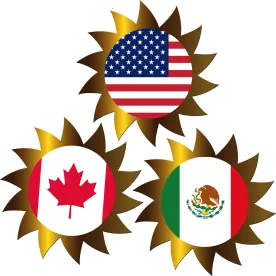On May 18, 2017, newly-confirmed U.S. Trade Representative Robert Lighthizer formally notified Congress that President Trump intends to renegotiate the North American Free Trade Agreement (NAFTA). The Trump Administration has indicated that it will request public input on the “direction, focus, and content” of these negotiations, and will publish notice in the Federal Register regarding such input. In a letter to House and Senate leaders regarding this renegotiation, Lighthizer indicated that he would also “consult closely with Congress” in developing U.S. negotiating positions. Negotiations with Canada and Mexico will begin no earlier than August 16, 2017.
Lighthizer’s letter also gave some indication of the Trump Administration’s priorities for this renegotiation. That letter observes that NAFTA was negotiated when “digital trade was in its infancy,” indicating that new provisions on electronic commerce may be forthcoming. The letter also states that new provisions were needed to address “intellectual property rights, regulatory practices, state-owned enterprises, services, customs procedures, sanitary and phytosanitary measures, labor, environment, and small and medium enterprises.” Finally, Lighthizer’s letter emphasized the importance of “effective implementation and aggressive enforcement” of the substantive commitments in the agreement in order to ensure the success of the agreement.
Renegotiation of NAFTA has long been part of President Trump’s agenda. During the campaign, then-candidate Trump called NAFTA a “disaster,” and renegotiation of the agreement is central to President Trump’s “Top Issue” of “Trade Deals that Work For All Americans.” The 2017 Trade Policy Agenda of the Office of the U.S. Trade Representative (USTR) provided some context for this dissatisfaction with NAFTA, and observed that “[f]or years now, the United States has run trade deficits in goods with our trading partners in the [NAFTA].” In recent weeks, President Trump had indicated an intention to terminate NAFTA, but decided instead to renegotiate the agreement after “pleasant and productive” conversations with President Peña Nieto of Mexico and Prime Minister Trudeau of Canada.
The United States, Canada, and Mexico—along with other nations—had recently concluded five years of intensive negotiations with respect to the Trans Pacific Partnership Agreement (TPP). As compared with NAFTA and other existing U.S. free trade agreements, TPP already reflected an evolution in the treatment of intellectual property, investment, and electronic commerce. Other provisions, such as the essential security exception, were largely the same in TPP as in prior U.S. trade agreements. While TPP negotiations were ongoing, USTR had requested public comment on various aspects of that agreement, including negotiating objectives with respect to participation in that agreement by both Mexico and Canada. On January 23, 2017, President Trump withdrew the United States as a signatory to TPP.
The Administration’s announcement of renegotiation offers stakeholders a significant opportunity to engage with USTR, Congress, and other government bodies to ensure that their priorities are included in the U.S. negotiating positions.





 />i
/>i

